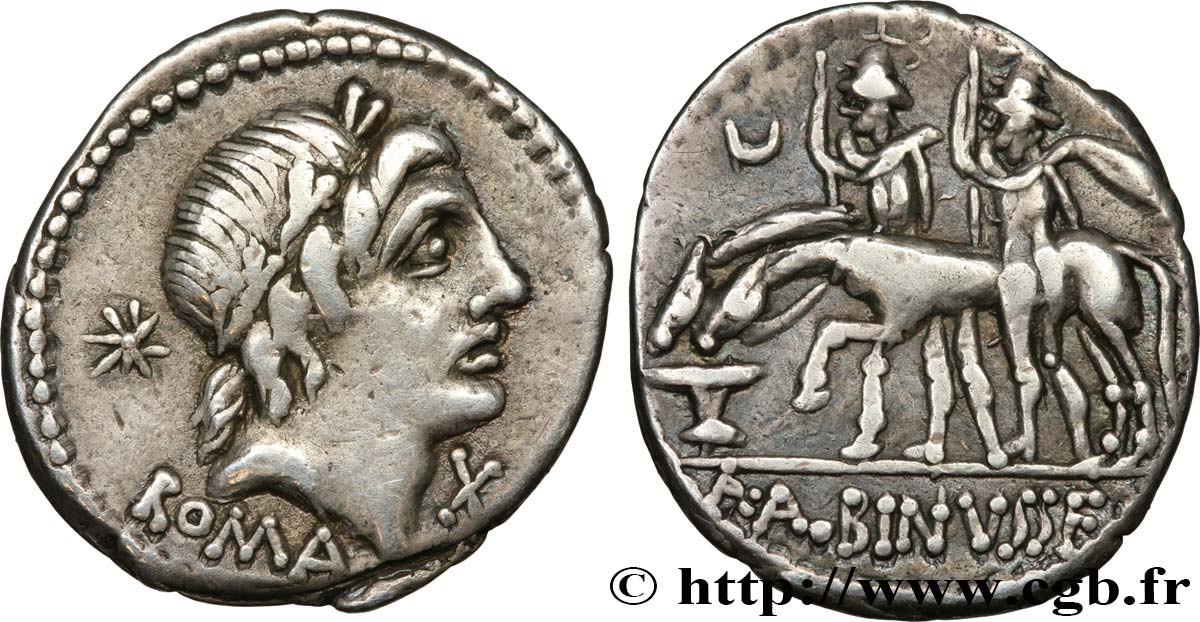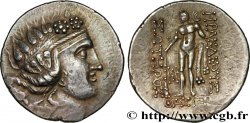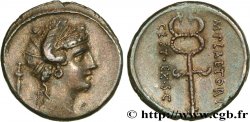Live auction - brm_466392 - POSTUMIA Denier
You must signin and be an approved bidder to bid, LOGIN TO BID. Accounts are subject to approval and the approval process takes place within 48 hours. Do not wait until the day a sale closes to register. Clicking on "BID" constitutes acceptance of the terms of use of cgb.fr private live auctions.
Bids must be placed in whole Euro amounts only. The sale will start closing at the time stated on the item description; any bids received at the site after the closing time will not be executed. Transmission times may vary and bids could be rejected if you wait until the last second. For further information check the Live auction FAQ
All winning bids are subject to a 18% buyer’s fee.
All winning bids are subject to a 18% buyer’s fee.
| Estimate : | 450 € |
| Price : | 370 € |
| Maximum bid : | 380 € |
| End of the sale : | 06 March 2018 15:06:13 |
| bidders : | 2 bidders |
Type : Denier
Date: 96 AC.
Mint name / Town : Roma
Metal : silver
Millesimal fineness : 950 ‰
Diameter : 20 mm
Orientation dies : 4 h.
Weight : 3,90 g.
Rarity : R2
Coments on the condition:
Exemplaire sur un flan ovale bien centré avec le grènetis visible au droit. Belle tête d’Apollon. Revers bien venu à la frappe. Patine grise avec des reflets dorés
Catalogue references :
Predigree :
Cet exemplaire provient de la collection C. Oliva
Obverse
Obverse legend : ROMA.
Obverse description : Tête laurée d’Apollon à droite ; derrière étoile à huit rais ; sous le menton, marque de valeur, X.
Obverse translation : “Roma”, (Rome).
Reverse
Reverse legend : A. (AL)BINVS. S.F À L’EXERGUE.
Reverse description : Les Dioscures, Castor et Pollux (Les Gémeaux) à cheval à gauche, nus, le manteau flottant sur l'épaule, tenant chacun leurs chevaux par la bride et une javeline verticale ; les chevaux se désaltérant dans la fontaine “lacus Juturnæ”.
Reverse translation : “Aulus Albinus Spurii Filius”, (Aulus [Postumius] Albinus fils de Spurius.
Commentary
Pour ce type, M. Crawford a recensé deux variétés principales avec une estimation de 68 coins de droit et de 85 coins de revers. Ce type semble plus rare que ne le laissent supposer les ouvrages généraux.








 Report a mistake
Report a mistake Print the page
Print the page Share my selection
Share my selection Ask a question
Ask a question Consign / sell
Consign / sell
 Full data
Full data










